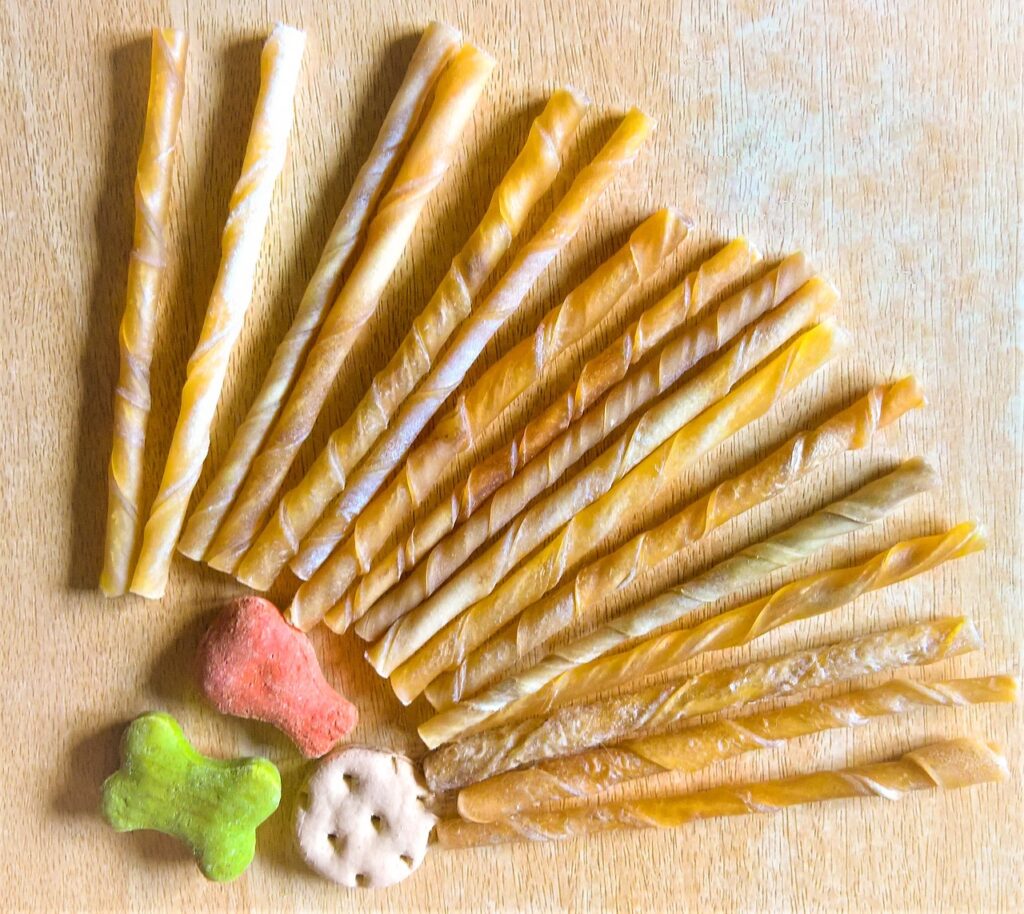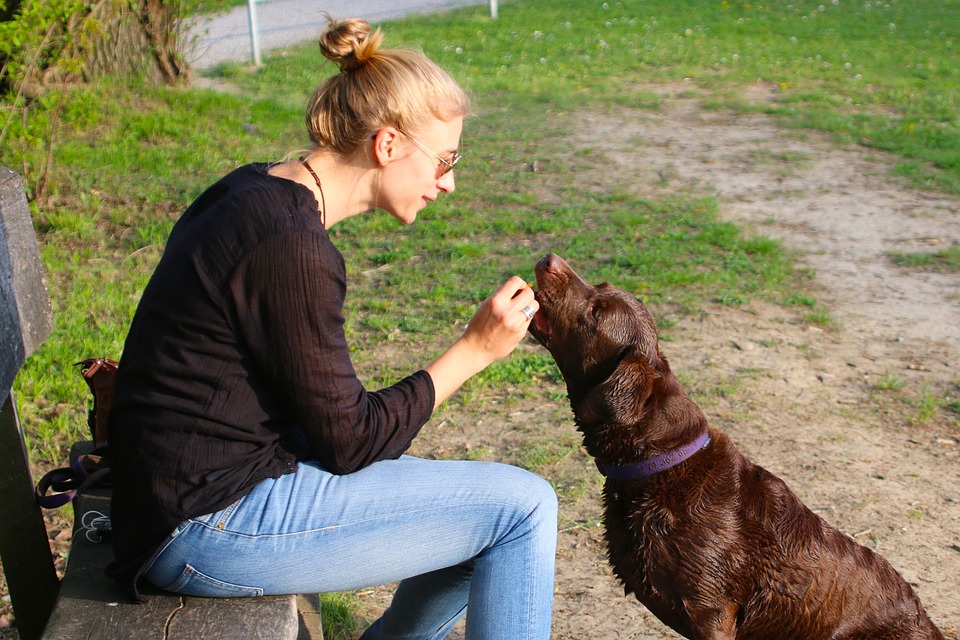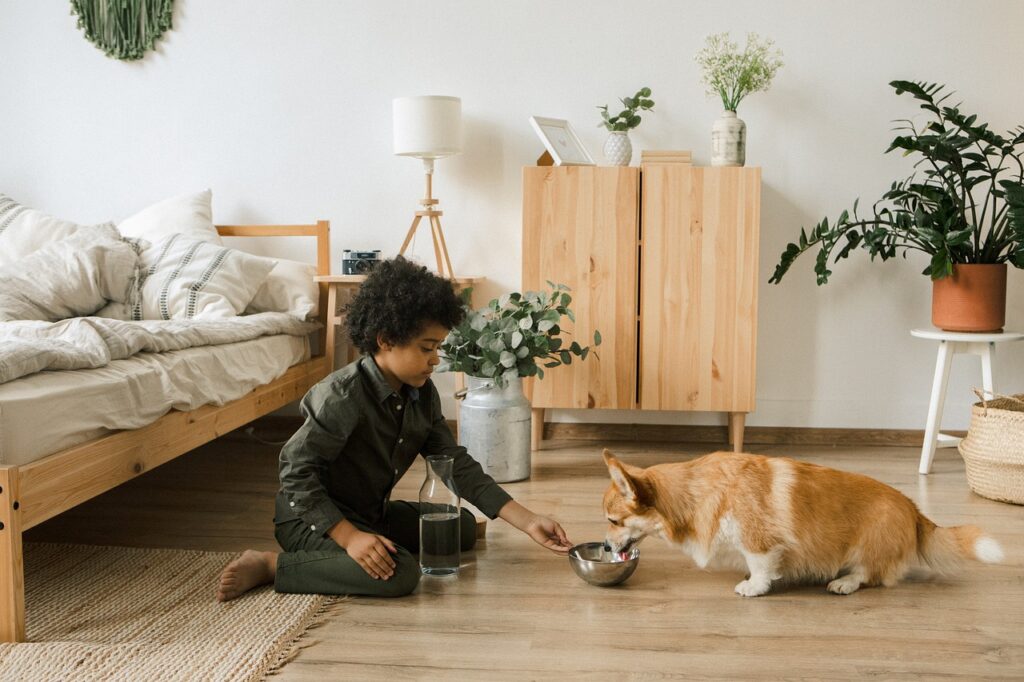Giving your Dog a Treat, or any dog food, without having a reason behind doing so is not a great idea. Treats are a great way to reward your pup and reinforce good behaviour. But before handing out treats, there are some important things every dog owner should consider. Failing to take key steps first could lead to weight gain, tummy troubles, or even serious medical issues for your canine companion.
So, let’s explore the crucial steps before giving your dog a treat. These simple guidelines will help ensure treats are safe and beneficial for your furry friend.
Table of Contents
What Should You Do First Before Giving a Dog a Treat?

Giving treats to your furry friend can be a great way to reward good behaviour, bond with your pup, or spoil them a little. However, there are a few things you should do first before handing over a tasty tidbit. Thinking through treat time will help ensure it’s a positive experience for you and your dog.
How Many Treats Should I Give My Dog Per Day?
Moderation is key when it comes to how many treats you should give your dog in a day. Too many treats can lead to obesity and other health problems. Generally, treats should make up at most 10% of your dog’s daily caloric intake. So how many treats exactly is that? Here are some guidelines based on your dog’s size:
Treats For Small Dogs
- Up to 10 pounds: Around 3–4 treats per day
- 10–25 pounds: Around 5–6 treats per day
Smaller treats are usually around five calories each. So, for a 10-pound dog eating four treats, that’s about 20 calories from treats, or less than 10% of their daily calories.
You May Also Like: CAN DOGS EAT BABYBEL CHEESE?
Treats For Medium Dogs
- 25–50 pounds: Around 7-10 treats per day
- 50-75 pounds: Around 10–15 treats per day
Medium-sized treats are normally around 15 calories each. So for a 50-pound dog eating ten treats, that’s 150 calories, or less than 10%.
Treats For Large Dogs
- 75-100 pounds: Around 15-20 treats a day
- Over 100 pounds: Around 20–30 treats a day
Bigger treats tend to be around 25 calories each. So, for a 100-pound dog eating 20 treats, that’s 500 calories, or less than 10% of their daily intake.
The exact number of treats depends on your specific dog and the calorie content of the treats. Check the package to see the nutrition facts. It’s also good to consult your vet to determine how many treats your pup should have daily.
How Many Treats Per Day for a Puppy?
Puppies need extra calories and nutrients to support their rapid growth and development. However, you still want to be careful with treating quantity. Here are some treatment guidelines for puppies based on age:
- 8–12 Weeks: Up to around 15 treats per day
- 3-6 Months: Around 10–20 treats per day
- 6–12 Months: Around 5–10 treats per day
Choose small, low-calorie puppy treats, ideally made specifically for puppies. And be sure to account for treats when calculating your total daily food intake so as not to should not exceed 10 percent of their daily caloric intake.
The first year is a crucial developmental period. Too many treats can set puppies up for weight gain and obesity. Vet approval is advised when determining an appropriate treatment amount.
Should I Give My Dog a Treat When I Leave?
Giving your dog a treat when you leave the house is a common tactic to distract them and prevent separation anxiety. However, there may be better ideas than this. Here are some things to consider:
Associating Treats with You Leaving
If you give treats every time right before you walk out the door, your dog will come to expect a treat at that moment. Ramping up anticipation anxiety before you go, instead of reducing it, can happen.
A Better Goodbye Routine
Instead of treats, have a quick play or petting session before leaving. Or give your dog a food puzzle toy to focus on when you’re gone. Shifting their energy in a more positive direction happens.
Consider Their Age
Puppies under one year old are more prone to separation distress. Giving a food toy specifically for puppies creates a positive association with being alone at a young age.
High-Value Treats
Giving a special high-value treat like a Kong may unintentionally heighten your dog’s excitement. Use normal small training treats instead if choosing to give one right before you leave.
Every Dog is Different
Monitor your individual dog’s reactions. If treats truly help them feel comfortable when you leave, then continue. But if it amplifies their anxiety, it’s best to stop.
The goal is to set your dog up for success in your absence. Try various techniques to determine what works best for reducing stress when you head out.
How to Give a Dog a Treat
Handing your dog a treat may seem straightforward. But how you give it can make a difference in dogs’ behaviour. Here are some tips on treat delivery:
Make Them Earn It : Ask for a command like “sit” or “shake” before giving the treat. Training is strengthened, and begging is avoided through this practice.
Open-hand delivery: Hold a treat in the open palm of your hand rather than pinched in your fingers. It can prevent him from nipping at your hand to get the treat.
No Touching: Once your dog takes the treat, pull your hand away so they don’t keep mouthing your hand and looking for more.
Slow Feeding: Hand larger treats to dogs gently and carefully to encourage chewing thoroughly. Or place treats in a puzzle toy to slow access.
One at a Time: Give single treats in succession. Only give a handful at a time. It can prevent gulping and help build anticipation.
Fair Access: If you have multiple dogs, ask them to sit in a row. Give each dog a treat calmly, one by one, down the line.
Positive Delivery: Give treats in a friendly, upbeat way with a smile and praise.
Watch Your Fingers: Be aware of placing fingers near your dog’s mouth to avoid accidental biting in great excitement. Following basic treat etiquette makes getting a treat enjoyable for dogs while reinforcing training.
You May Also Like: ARE DRUG DOGS TRAINED TO SMELL MAGIC MUSHROOMS?
Are Dog Treats Good for the human-dog relationship?

Used strategically, dog treats can strengthen the bond between owner and pup. Here’s how:
Positive Reinforcement: Giving treats for good behaviour is positive reinforcement. Showing your dog what makes you happy is a way to communicate with your furry friend.
Shared Joy: Dogs love treats and get excited when they know you’re giving them one. Sharing this joy creates happiness.
Communication: The treat exchange is a form of non-verbal communication, saying, “You did a good job!”
Cooperation: Asking a dog to sit or shake before getting a treat fosters cooperation between you and your dog.
Anticipation: Your dog will start looking to you expectantly for treats at certain times or when you have the treat bag.
Routine: Regularly scheduled treatment times, like after a walk or with medicine, create positive, consistent routines.
Touch: Hand-feeding treats provides affectionate physical contact between you and the dog.
However, stay moderate on quantity, use high-value treats sparingly, and ensure treats supplement training rather than replacing praise. When used thoughtfully, treats add an extra layer of positivity.
What Brand of Dog Treats Are Killing Dogs?
Certain brands of treats have been linked to some disconcerting and even deadly effects in dogs. Here are two great brands to be cautious of:
Waggin’ Train Jerky Treats
The FDA has issued warnings about Waggin’ Train and Canyon Creek Ranch brand jerky treats made by Nestle Purina. Since 2007, over 3,000 reports have been received of dogs becoming ill or dying after eating these treats, often imported from China.
Symptoms linked to eating these jerky treats include:
- Vomiting
- Diarrhea
- Increased thirst
- Increased urination
- Kidney failure
Contamination may play a role, but no specific cause has been identified. The FDA continues to investigate but still advises avoiding these products.
Greenies Dental Chews
Greenies are a popular dental treat but have been associated with choking hazards for some dogs. Since 2006, The company has issued many recalls on different sizes due to safety issues and dozens of choking cases.
Some signs your dog may be choking on a Greenie or other treat:
- Coughing
- Gagging
- Difficulty Breathing
- Drooling
- Pawing at the mouth
Supervise dogs when eating any dental chew treats. Consider brushing your dog’s teeth or giving raw bones as safer alternatives.
Check the FDA’s website for recalls before buying pet treats or chews. Make sure to monitor your dog closely when giving him any new edible item.
Can Too Many Treats Kill a Dog?
Yes, too many treats can cause serious harm or even death in dogs. Here’s how:
Pancreatitis: Too many fatty treats can inflame the pancreas. This is extremely painful and life-threatening.
Bloat: Overfeeding treats may contribute to deadly bloat, or GDV, where the stomach fills with gas and twists. This condition comes on fast.
Obesity: Excess treats pile on pounds, putting dogs at risk for joint issues, heart disease, diabetes, etc.
Nutritional Imbalance: Too many treats throw off the balance of nutrients a dog needs to thrive. This can lead to vitamin deficiencies.
Choking: Gulping down too many treats or poorly shaped treats can lead to choking incidents.
Intestinal Upset: Dogs given a sudden large quantity of treats often get diarrhoea, gas or vomiting.
Toxicity: Ingesting contaminated or rancid treats and ingredients can be toxic. Kidney failure is one possible outcome.
Allergies: Some dogs may have unknown food allergies and have a reaction to ingredients in mass-produced treats.
While most dogs love treats, even good things should be given in moderation. Follow recommended daily treatment guidelines for your dog’s safety and well-being.
Conclusion: What Should You Do First Before Giving your Dog a Treat?
Giving your beloved pooch a tasty treat is one of life’s pleasures. However, taking a few moments to think through treat time helps set your dog up for the best experience possible.
Consider your dog’s unique needs, create positive associations, reinforce training, and stay vigilant about safety. With the right approach, treat time can be a cherished bonding ritual your dog looks forward to each day. Now, share a special moment with your furry friend!
FAQS: What Should You Do First Before Giving your Dog a Treat?
Q: How many treats should I give my small puppy per day?
A: For small breed puppies under 25 pounds, around 10-15 treats per day is appropriate. Choose tiny-sized treats made just for small puppies under a year old.
Q: What are signs my dog is choking on a treat?
A: Signs can include coughing, gagging, difficulty breathing, drooling, pawing at the mouth, and distress. If choking is suspected, stay calm, open your mouth to remove the blockage, and get them to the vet immediately.
Q: Are there any homemade treats I can make myself?
A: Yes! Homemade treats made from simple, whole ingredients are a great option. Some ideas are frozen plain yoghurt bites, baked chicken strips, sweet potato chews, or oatmeal cookies. Always consult your vet first about appropriate recipes.
Q: Should I treat my dog before entering the crate?
A: Giving a treat right before crating your dog can help create a positive association with being in their crate. Just be sure not to add extra treatment quantity before confining to avoid digestive upset.
Giving treats should be a thoughtful process to maximize health and training. Now that you know what to do before treating your dog, it’s time to implement these tips! Grab your dog’s leash and take a fun training walk, giving them tasty rewards. Bring positivity and cooperation to your daily activities with your favourite furry companion.







